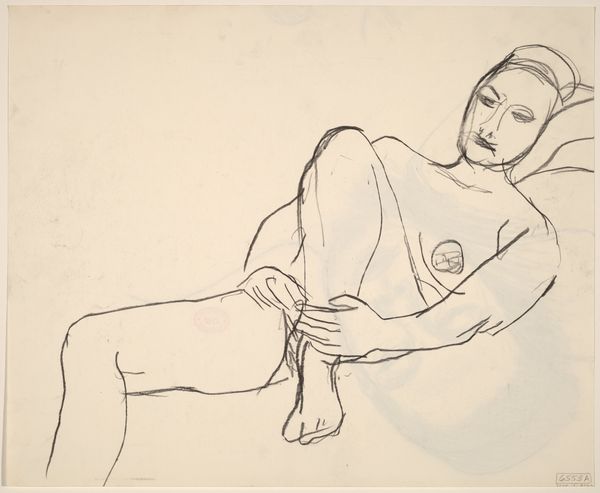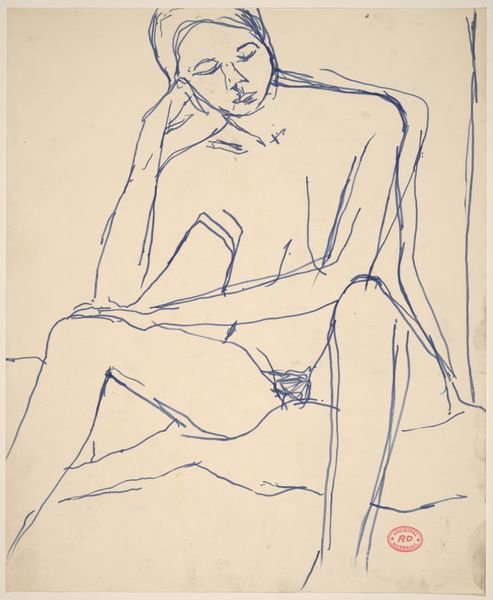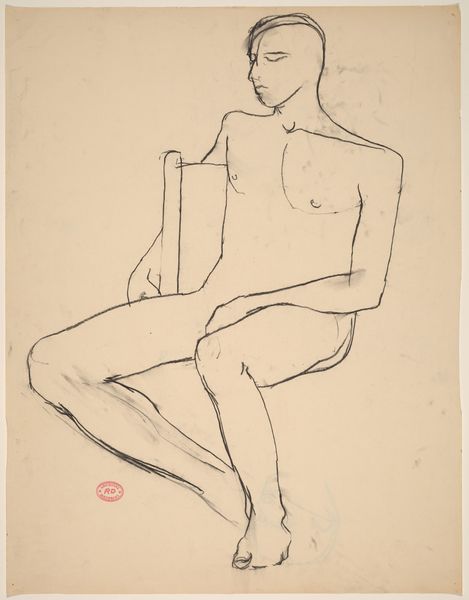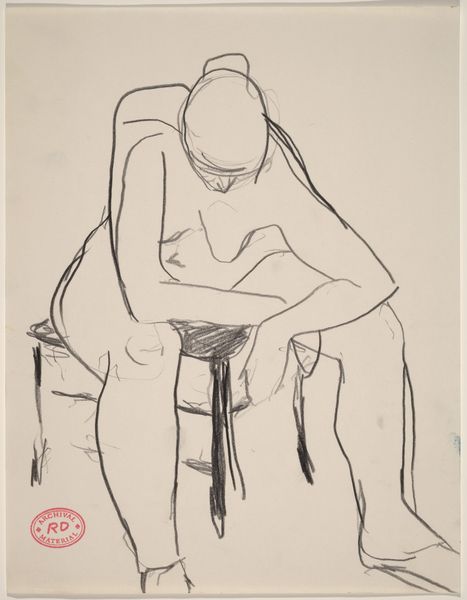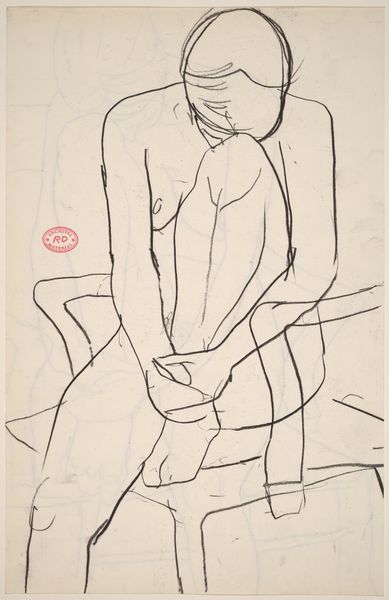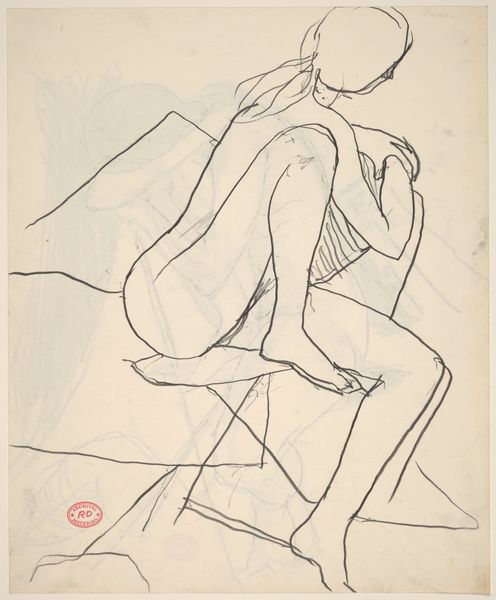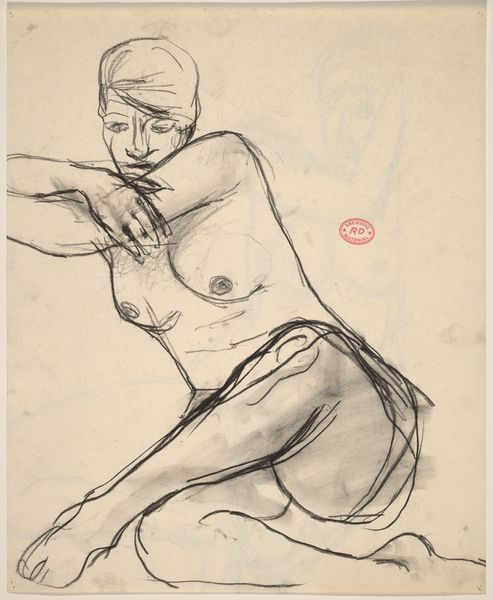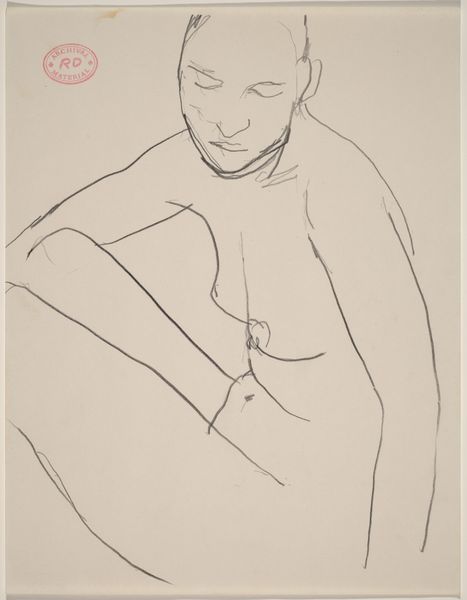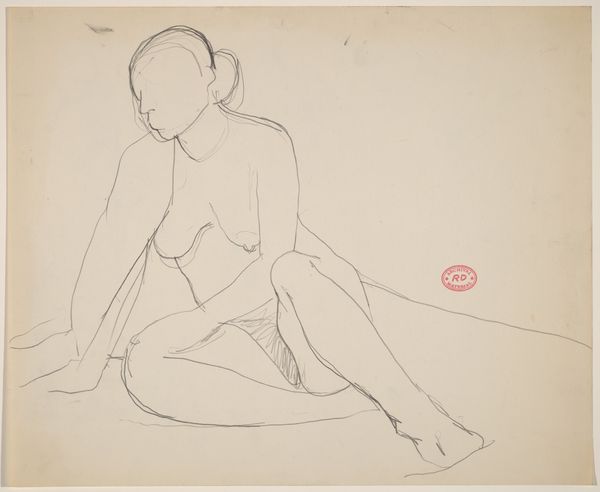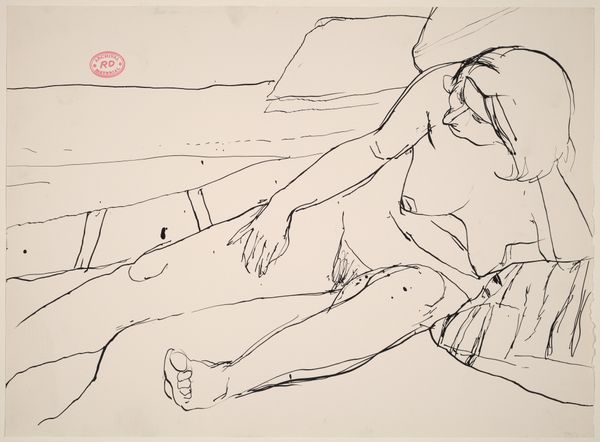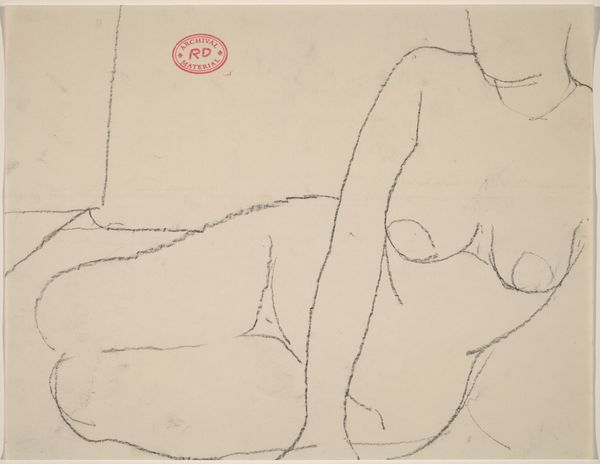![Untitled [nude seated with her left arm over her left leg] [recto] by Richard Diebenkorn](/_next/image?url=https%3A%2F%2Fd2w8kbdekdi1gv.cloudfront.net%2FeyJidWNrZXQiOiAiYXJ0ZXJhLWltYWdlcy1idWNrZXQiLCAia2V5IjogImFydHdvcmtzL2Y3NWE0NjJkLWMyMTctNGYxMC1iMzZjLThhOTkyZjdlN2I1My9mNzVhNDYyZC1jMjE3LTRmMTAtYjM2Yy04YTk5MmY3ZTdiNTNfZnVsbC5qcGciLCAiZWRpdHMiOiB7InJlc2l6ZSI6IHsid2lkdGgiOiAxOTIwLCAiaGVpZ2h0IjogMTkyMCwgImZpdCI6ICJpbnNpZGUifX19&w=3840&q=75)
Untitled [nude seated with her left arm over her left leg] [recto] 1955 - 1967
0:00
0:00
drawing, pencil
#
drawing
#
figuration
#
bay-area-figurative-movement
#
pencil drawing
#
pencil
#
line
#
portrait drawing
#
nude
Dimensions: overall: 27.8 x 43.2 cm (10 15/16 x 17 in.)
Copyright: National Gallery of Art: CC0 1.0
Curator: Look at this understated pencil drawing by Richard Diebenkorn, probably executed between 1955 and 1967. It is called "Untitled [nude seated with her left arm over her left leg] [recto]". Editor: My immediate reaction is the quietude, the interiority of the subject. The sketchiness emphasizes the model's introspection, almost as if she's posing for herself rather than an external gaze. Curator: Indeed. There’s an intimate dynamic being established through Diebenkorn’s reduction of form, isn’t there? The interesting thing is, Diebenkorn, as a figure who moved from abstract expressionism to figuration and back again, engaged with the human form in the politically charged context of post-war American art, where abstraction was often seen as progressive and figuration as conservative. Editor: That tension between abstraction and representation is visible in the way the figure is rendered. Note how he’s focused less on accurate representation and more on line, the raw mark of pencil on paper; the negative space becomes just as crucial in defining the form as the contour lines. Curator: And that relationship between positive and negative space can be linked to Diebenkorn’s interest in the flattening of the picture plane, very much a legacy of modernist aesthetics influencing post-war painting and drawing. Think about how art institutions like museums also helped propel such styles forward, especially those rooted in abstraction. Editor: Exactly, and I see it particularly in the spatial ambiguity within the piece. Are we looking at a body or just an idea of one? Is it her sitting? What sort of experience has he created, simply using a pencil. The light and shadow do provide shape without actually shaping form, an almost Cubist sensibility through purely linear means. Curator: It makes one ponder what a drawing like this was supposed to accomplish in this transitional moment in art history. Perhaps, in stripping the figure down to these essential lines, he also aimed to challenge conventional portrayals of the nude figure within a heavily patriarchal and heterosexual Western art establishment? Editor: It’s easy to imagine the conversations, even arguments, that these subtleties would have generated when initially exhibited. A simple study raises surprisingly complex issues about what art does and is. Curator: In the end, this single pencil drawing functions like a quietly powerful manifesto. It makes one reconsider Diebenkorn's artistic evolution and what the figure signified at that period. Editor: A fitting observation; it's this ability to prompt endless readings, both formal and historical, that confirms the drawing's enduring interest.
Comments
No comments
Be the first to comment and join the conversation on the ultimate creative platform.
